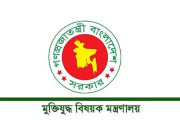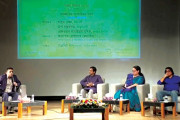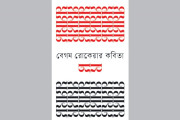How badly Bangladeshi higher education needs a turnaround becomes apparent from the fact that even the best universities of Bangladesh don’t get top billing in international rankings. No Bangladeshi higher education Institutions figures in the top 200 globally in the latest Quacquarelli Symonds (QS) world rankings.
।। Liton Chandro Sarkar ।।
Higher education is the most fundamental constituent, and it requires careful attention and evaluation to foresee prospective outcomes in a given country. It is indeed a reward for citizens, gives knowledge and respect, makes an individual self-assured, and provides a career. The best indicators of a university’s performance are the learning outcomes and how its education has impacted the students and society. Bangladeshi higher educational institutes need to ask themselves: What positive role can they play in improving the quality of higher education? What can we do to adopt innovative approaches to become future ready? And they need to act on those questions to make a change and plan beyond what is obvious. If a country has a world-class educational system with a focus on innovation, best teaching-learning processes, research-oriented towards social good, affirmative action plans for inclusive and accessible education, it will have a more visible social and economic impact.
How badly Bangladeshi higher education needs a turnaround becomes apparent from the fact that even the best universities of Bangladesh don’t get top billing in international rankings. No Bangladeshi higher education Institutions figures in the top 200 globally in the latest Quacquarelli Symonds (QS) world rankings. Bear in mind, QS considers not just the conventional parameters like teaching and research excellence/repute, but even ones such as knowledge transfer, which measures participation in exchange programmes and collaboration with other international universities, and impact, measuring progress against the UN’s SDGs. Such rankings also highlight improvement in higher education ecosystems across nations.
Chart, pie chart Description automatically generated
The QS ranking is the only international university ranking to have received approval from the International Ranking Expert Group (IREG), and is viewed as one of the three most-widely read university rankings in the world. Each of the 1,300 universities evaluated in the QS World Rankings were assessed according to six key metrics: academic reputation (40%), employer reputation (10%), faculty/student ratio (20%), citations per research paper (20%), international research network (5%), and international student ratio (5%). No Bangladeshi university, neither public nor private, found a place at the top level of the Quacquarelli Symonds (QS) World University Ranking 2022. Only four Bangladeshi universities make tail of QS World Rankings. The positions of Dhaka University (DU) and Bangladesh University of Engineering and Technology (BUET) remained unchanged at the 801-1000 range, while private universities Brac and North South (NSU) placed in the 1001-1200 range on their first appearance. But is that really satisfactory? There are 50 public universities and 108 private universities that are operational in Bangladesh, according to the University Grants Commission (UGC). But the question is: though there are so many public and private universities in Bangladesh, why is none in the top 100? In fact, the universities in our country are unable to meet the criteria that the QS authorities consider for ranking.
In the 2022 ranking, QS neither specified positions nor the overall score for universities standing below 494, rather mentioning the names of several universities in a range. The Massachusetts Institute of Technology (MIT) in the US again topped the list or the 10th consecutive year with a perfect score of 100. They were followed by Oxford, Stanford University, University of Cambridge, and Harvard University. National University of Singapore placed top among Asian universities, like last year, and 11th overall. A total 26 universities from the continent placed in the top 100 universities, and 390 Asian universities made the full list. The Indian Institute of Technology Bombay (IITB) is the top ranked South Asian university at 177th overall. Four Pakistani universities and 18 Indian universities are ahead of all Bangladeshi universities in the newly published QS rankings.
The fact that the best highest seats of learning have the most acclaimed faculty scientists and scholars and the greatest number of them is in the USA is not for nothing. The primary reason is infrastructure and higher fund allocation not only for research and experiment but also for attracting best brains from home and abroad for creation of a pool of highly talented scholars. Cooperation and collaboration between the corporate world and university faculties give their strength. Such undertakings of joint ventures prove mutually highly beneficial as well. In this context, second position holder the Oxford University can be a very good example of responding to the critical need for saving the humanity against the scourge of a pandemic. In collaboration with a Swedish pharmaceutical company AstraZeneca, it has developed an anti-Covid-19 vaccine now being widely used. The university has also developed rapid testing technology for the disease and even a convenient type of ventilator.
If we take a look at QS ranking criteria, the issue will become very clear. The first is academic reputation (40%). It basically indicates which university has the best reputation in the eyes of the world’s great academics. As soon as you open a newspaper, you see that in almost every public university in Bangladesh, the issues that need to be taken care of to achieve academic reputation are the most neglected ones. Occasionally, university teachers make headlines by committing plagiarism. Even, there are many teachers whose PhD degrees are fake. This way, the academic reputation of a university is tarnished in the eyes of international academics. The second criterion is the degree of reputation graduates can gain in the employer reputation (10%). Looking at this criterion makes one feel helpless, as most of the graduates that the universities of our country are producing, are unemployed. They are not getting jobs according to their academic qualifications because they did not acquire proper object-oriented skills and information and communications technology skills while obtaining degrees. In most universities, theoretical education is given more importance than object-oriented one. So, graduates are not able to do well in the workplace. That is why the universities of our country lag behind the most in this criterion. The third criterion is faculty/student ratio (20%). In our country, a university does not even have the required number of teachers in proportion to the number of students. There are also departments where the whole department is run by only one or two teachers. The fourth is international research network (5%). This indicator shows how many foreign universities have research collaboration with our local universities. In Bangladesh, many old universities have some collaborations, but the teacher-student and research exchange activities are very rare, and new universities do not even have such an opportunity. The fifth indicator is the number of citations per research paper (20%) and international student ratio (5%). The situation of Bangladeshi universities is fragile in these indicators. It’s not as if there is no research in the universities of our country, but whatever is done is being done only to protect the rules. The articles of those who are doing research are rarely published in quality journals. Although some public universities have a small number of foreign students, the rate is declining day by day. Needless to point out, there are almost no international teachers in universities. However, the university authorities do not have an account of how many papers come out in an academic year and how many citations they receive. If you visit the websites of our universities, you see that there is inadequate information.
Almost all public university websites (except a few) still look very old. Profiles of the teachers containing detailed information, their research interests, research fields, number of published papers and their links, and Research Gate profile links are not available on the websites. Even the details of the indispensable information about universities and students are not updated on the web. Yes, it is true that allocation for research in our country is much less than that in other countries. But the question is: is the allocation even used properly?
It is against such a backdrop, the placement of DU and BUET should be analysed. The research bases of universities here are outrageously weak. With the economic progress Bangladesh is now making, the fund allocations for research and innovation by varsities are too meagre to be consistent with. What is bewildering, though, is that the DU cannot even spend the poor allocation for research. These points to the reluctance of university faculties to encourage, promote and advance research works. The BUET, on the other hand, has to its credit some technological inventions and developments. Even its students are proving their merit by capturing enviable positions in international competitions including a robotic challenge of the National Aeronautics and Space Administration (NASA), USA. The message is that this country has no dearth of talents but for the facilities and infrastructure. Students and teachers working at universities abroad have high achievements in this regard.
If we ensure transparency, accountability, and proper leadership in our universities, it is expected that they will be able to meet the criteria set by the QS. It is hope that the appropriate authorities will work to improve the overall quality of universities considering the above issues. Universities of Bangladesh are not paying attention to any rankings right now. They are focusing on expansion and development in the field of fundamental research, as well as in amplifying the quality and environment of education. If we focus on these matters, universities of Bangladesh ranking will improve anyway. So here is an area that begs for far greater investments and capacity building of both infrastructure and human resources. There are many other ways how improvement can be brought about in the six metrics of the QS ranking. Let universities set their sight on a higher benchmark. If Saudi Arab’s King Abdulaziz University can jump 34 steps up in a year to 109th position in the world, there is no reason why universities of Bangladesh cannot do equally well. Bangladesh must keep pace with transformative changes taking place globally.
The writer is Deputy Inspector of Colleges, Bangladesh University of Professional. E-mail: liton.aioc@gmail.com










































































































































































